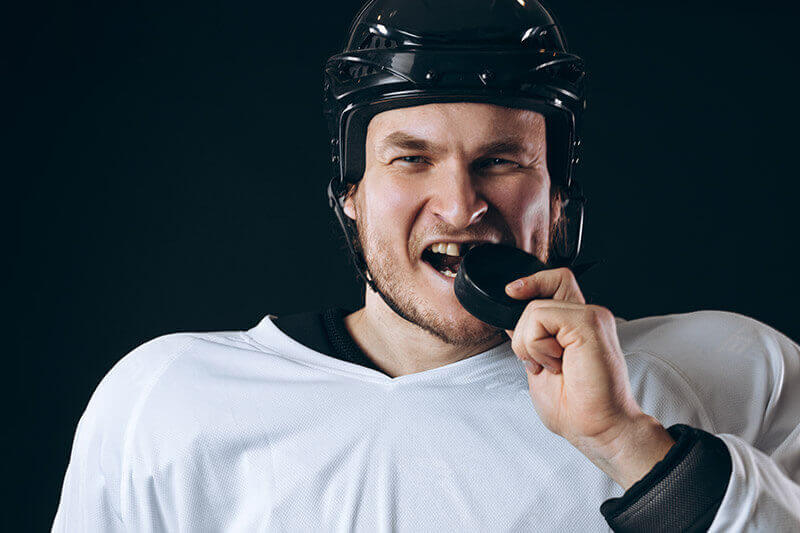Dental Trauma
Canada. Land of hockey, skiing and falling down. We’ve all done it, right? Sometimes we lead with our backside, sometimes with out face. And don’t forget the never-ending list of those who’ve been on the receiving end of a hockey stick. Or a puck. Or a rock. Teeth are broken, loosened, lost or just go black. If you’re lucky, you may just need a small filling to repair the damage, but many aren’t so fortunate.
Dental trauma from, oh, I don’t know – eating a hockey stick, can lead to many problems down the road if left untreated. Persistent infections, bone loss, resorption (i.e. the tooth “dissolving” from the inside-out or outside-in) and tooth loss could be in your future if you don’t deal with these issues. I mean, you wouldn’t leave a broken finger alone, would you?
If the answer was yes, please stop reading now….
Your dentist can assess the damage from whatever your flavour of trauma, offer treatment options and usually provide the necessary care so that you can keep smiling without drawing unwanted attention. Immediate attention (preferably the day of trauma) can offer the best long-term prognosis. Here are some tooth-saving tips:
- If you knocked your tooth right out, see your dentist in less than 1 hour (preferably with your tooth). hile on your way, place the tooth in milk or even your own saliva. Remember, the clock is ticking, so be fast. The sooner it goes back into your jaw, the better – longer than 1 hour is usually bad news
- If your tooth is fractured, but the nerve isn’t exposed, a filling may do the trick
- If your tooth is loosened, it can usually be “snapped” back into place by your dentist. Don’t be a hero – go to your dentist.
Of course, when it comes to sports, the best treatment is a mouthguard. This goes for all sports where you come into contact with other humans or fixed objects, like goalposts or fences or the ground. As always, if you’re not sure, talk to your dentist. They want you to keep your teeth as much as you do.



